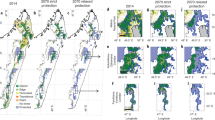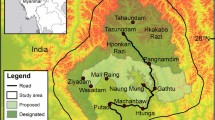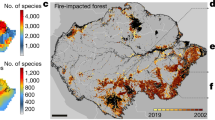Abstract
TROPICAL forests are among the most seriously threatened terrestrial environments, and while biologists and conservationists argue for preservation, the plunder continues virtually unabated1. In Sri Lanka (Ceylon), for example, the southern rain forests and montane forests contain a rich assemblage of endemic animals, but despite the protestations of the local conservationists, deforestation is rapidly destroying these habitats. One reason for govenment inaction in Sri Lanka, as elsewhere, may be the inability of conservationists to make an objective case for the value or uniqueness of these forests. In this paper, we propose some new approaches to this old problem.
This is a preview of subscription content, access via your institution
Access options
Subscribe to this journal
Receive 51 print issues and online access
$199.00 per year
only $3.90 per issue
Buy this article
- Purchase on Springer Link
- Instant access to full article PDF
Prices may be subject to local taxes which are calculated during checkout
Similar content being viewed by others
References
Eckholm, E. P., Science, 189, 764–770 (1975).
Frankel, O. H., Genetics, 78, 53–65 (1974).
Cooray, P. G., The Geology of Ceylon (Ceylon Museum, Colombo, 1967).
Wadia, D. N., Spol. Zeylan, 23, 1–7 (1941).
Wadia, D. N., Ceylon Dept. Mineralogy: Retards, Professional Paper I, 25, 3–14 (1945).
Koelmeyer, K. O., Ceyl. Forester (New series) 3, 119–163 (1957).
Gaussen, H., Legris, P., Viart, M., and Labroue, L., Vegetation Map of Ceylon: Explanatory Notes (Government Press, Ceylon, 1958).
De Rosaryo, R. A., Trap. Agric., 106, 108–121 (1950).
Deraniyagala, P. E. P., A Colored Atlas of Some Vertebrates from Ceylon 1–3;6, 1–149; 7, 1–101; 8, 1–121 (Ceylon Museum, Colombo, 1958).
Kirtisinghe, P., The Amphibia of Ceylon (Author, Two Charles Circle, Colombo, 1957).
Wall, F. G., The Snakes of Ceylon (Ceylon Museum, Colombo, 1921).
Henry, G. M., The Birds of Ceylon (Oxford University, London, 1955).
Taylor, E. H., Univ. Kansas Sci. Bull., 35, Part 2, No. 14, 1615–1624 (1954).
Munro, I. S. R., The Marine and Freshwater Fishes of Ceylon (Canberra, Australia 1955).
Cruz, H., Biol. Cons., 5, 199–208 (July, 1973).
Cruz, H., and Ching, C. C., Ann. Parasit. Paris, 50, 531–558 (1975).
Darlington, P. J., Zoogeography: The Geographical Distribution ol Animals (Wiley New York 1957).
Raven, P. H., and Axlerod, D., Ann. Mo. Bot. Gardens, 61, 539–673 (1974).
Author information
Authors and Affiliations
Rights and permissions
About this article
Cite this article
SENANAYAKE, F., SOULÉ, M. & SENNER, J. Habitat values and endemicity in the vanishing rain forests of Sri Lanka. Nature 265, 351–354 (1977). https://doi.org/10.1038/265351a0
Received:
Accepted:
Issue Date:
DOI: https://doi.org/10.1038/265351a0
This article is cited by
-
Phylogenetic tests of distribution patterns in South Asia: towards an integrative approach
Journal of Biosciences (2006)
-
Threats to the indigenous freshwater fishes of Sri Lanka and remarks on their conservation
Hydrobiologia (1994)
-
Habitat values and endemicity in the vanishing rain forests of Sri Lanka
Nature (1977)
Comments
By submitting a comment you agree to abide by our Terms and Community Guidelines. If you find something abusive or that does not comply with our terms or guidelines please flag it as inappropriate.



